Tang Dynasty Hanfu Restoration
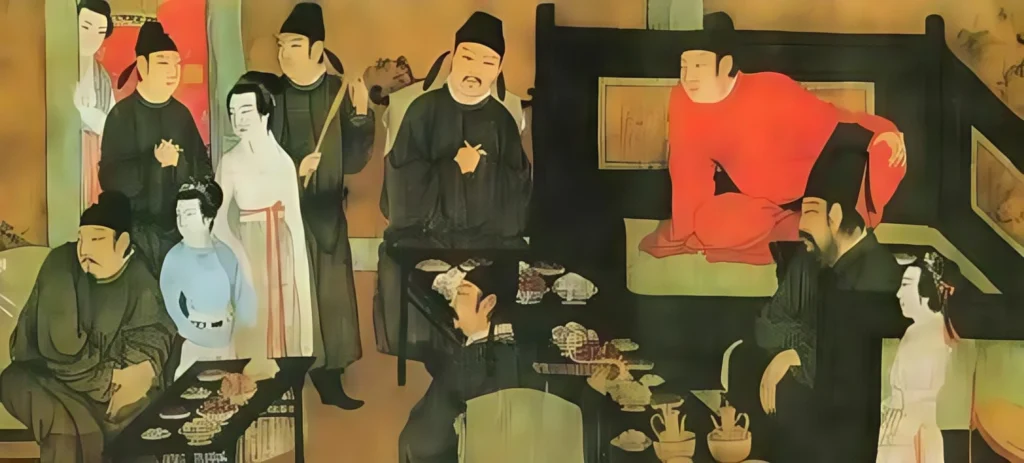
The Tang Dynasty Hanfu represents a pinnacle of Chinese traditional clothing, reflecting a unified nation and thriving economy. During this era, clothing styles became more open, with lavish designs showcasing intricate embroidery and vibrant colors. Men’s and women’s outfits evolved distinctly, incorporating elements like the futou headcloth and women’s Hanfu fashion, blending Han and non-Han (Hu) influences.
During the Tang Dynasty, a unified nation and booming economy led to more open clothing styles, with outfits becoming increasingly lavish. Men typically wore round-collar robes, wrapped headcloths (futou), and long boots, adorned with animal or plant embroidery and ornate accessories. Women’s clothing was highly intricate, characterized by a combination of skirts, shirts, and shawls (pei). The upper body featured short jackets (ru), coats (ao), or tunics (shan), paired with wrapped skirts and silk waist sashes. Jackets and coats often had embroidered or woven patterns. Skirts came in vibrant colors like red, purple, yellow, and green, with red being the most popular.
Tang Dynasty Men’s Clothing
Futou (Headcloth)
In the Tang Dynasty, futou (headcloths) paired with robes were fashionable. The futou, also called futou, evolved from the Han-Wei era’s headscarf.
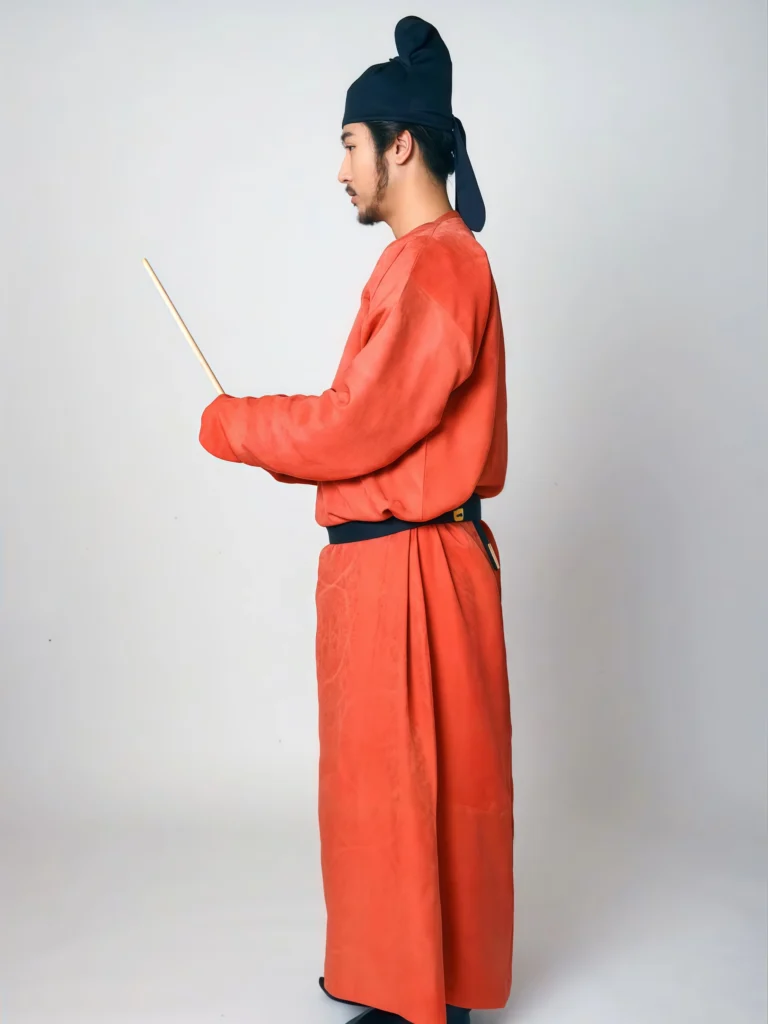
After the early Tang, a fixed accessory called a “towel” (jinzi) was added inside the futou. The shape of the jinzi varied across periods. Besides the jinzi, the futou’s two “feet” (extensions) also changed over time. By the late Tang and Five Dynasties, soft feet had transformed into rigid ones, one on each side.
Lan Robe and Lan Shirt
The defining feature of the Lan robe and Lan shirt is a horizontal strip (lan) added at the hem, giving them their name.
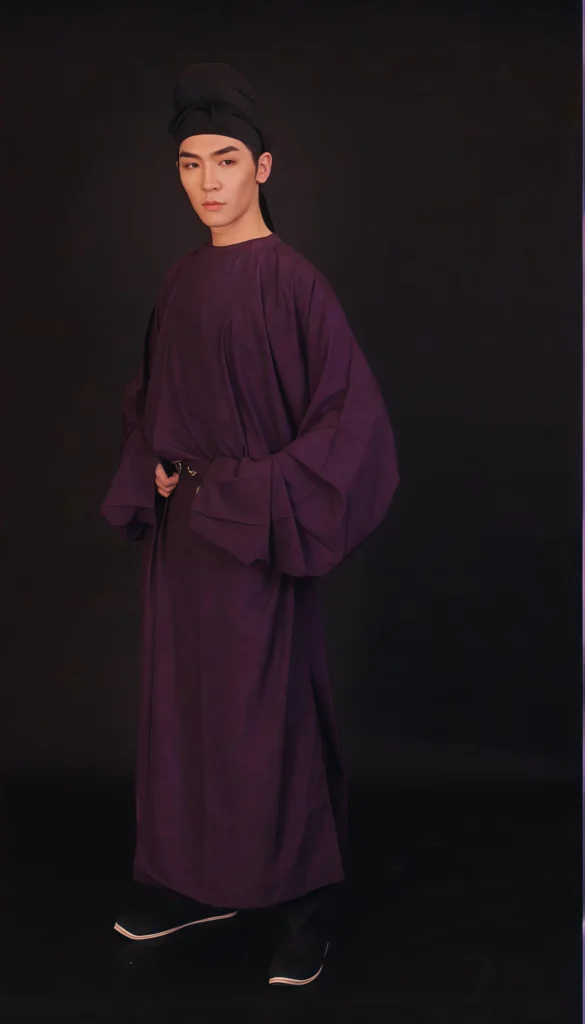
This style connects the upper garment and lower skirt, influenced by non-Han (Hu) clothing while retaining Han Chinese traditions. It shares similarities with the Shenyi (one-piece robe), as both join top and bottom.
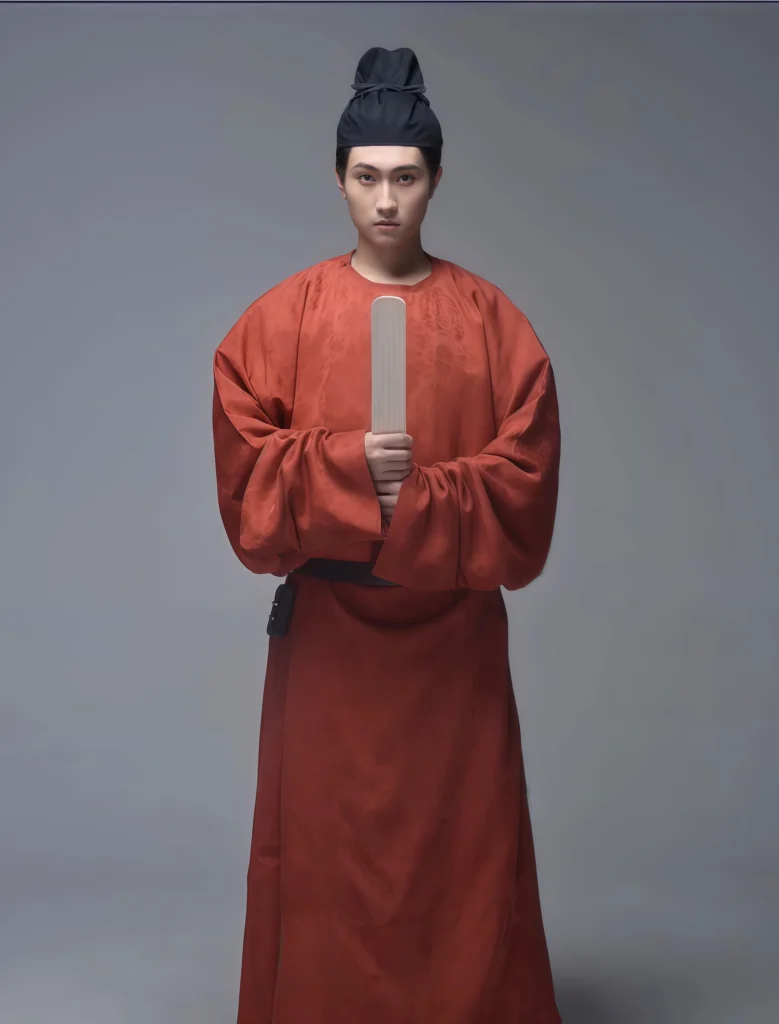
The difference lies in design: Shenyi has a cross-collar and wide sleeves with decorative edging on the collar, sleeves, and hem, while Lan robes and shirts have round collars, narrow sleeves, and no edging. They served as elite attire for scholars and common everyday wear.
Side-Slit Robe and Side-Slit Shirt
The term “side-slit” (que kua) refers to slits at the hips of robes or shirts, designed for ease of movement.
This style was typically worn by commoners or servants. It features a round collar, narrow sleeves, side slits, and a length reaching below the knees or to the ankles. Paired with narrow trousers, workers could tuck one corner of the shirt into the waistband, called “binding the shirt” (fu shan).
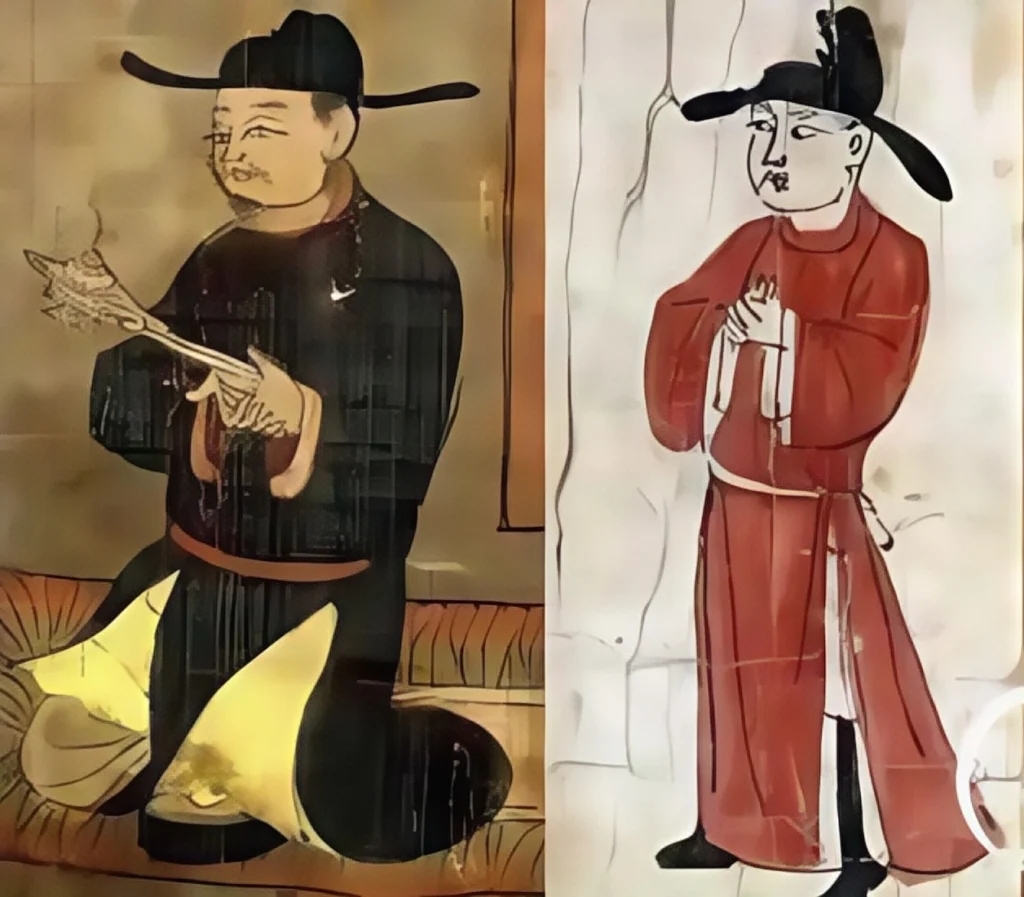
Tang Dynasty Women’s Clothing
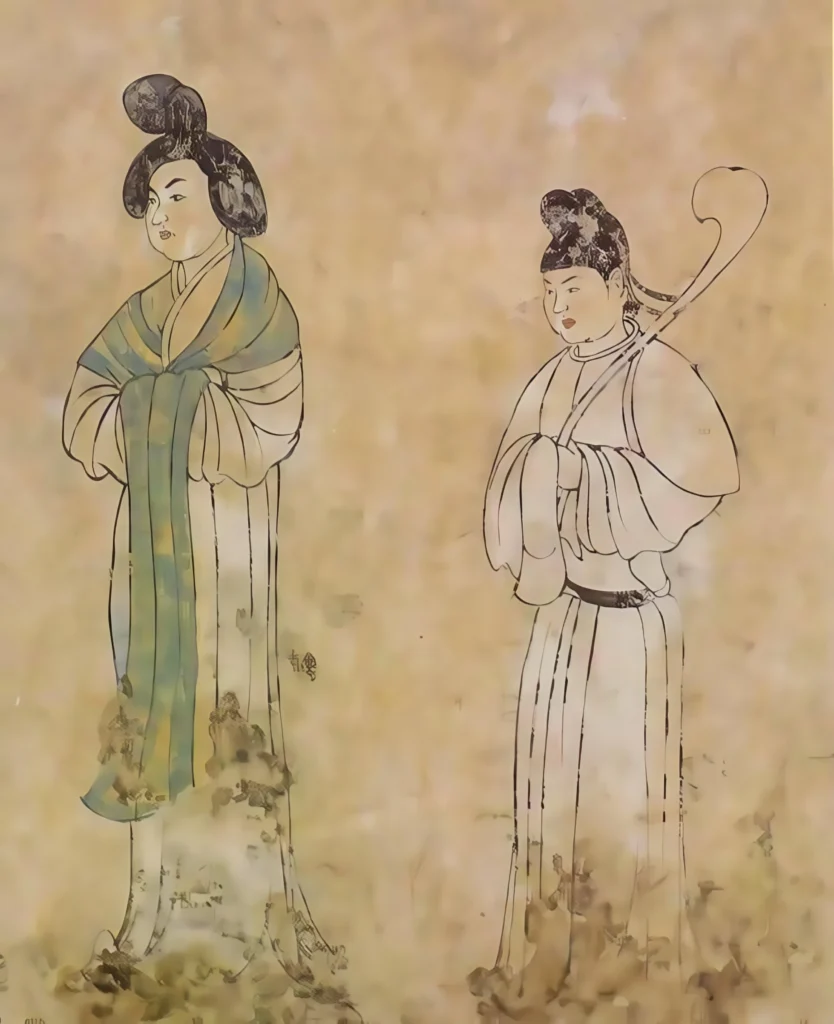
618–712 CE: Early Tang Period
In the early Tang, women commonly wore wide-sleeved jackets (ru), striped skirts, and shawls (peizi). Wide-sleeved skirts with short jackets or narrow-sleeved shirts were typical. Women dressing in men’s clothing was also common, often in Hu-influenced styles like round-collar or flip-collar narrow-sleeved long robes.
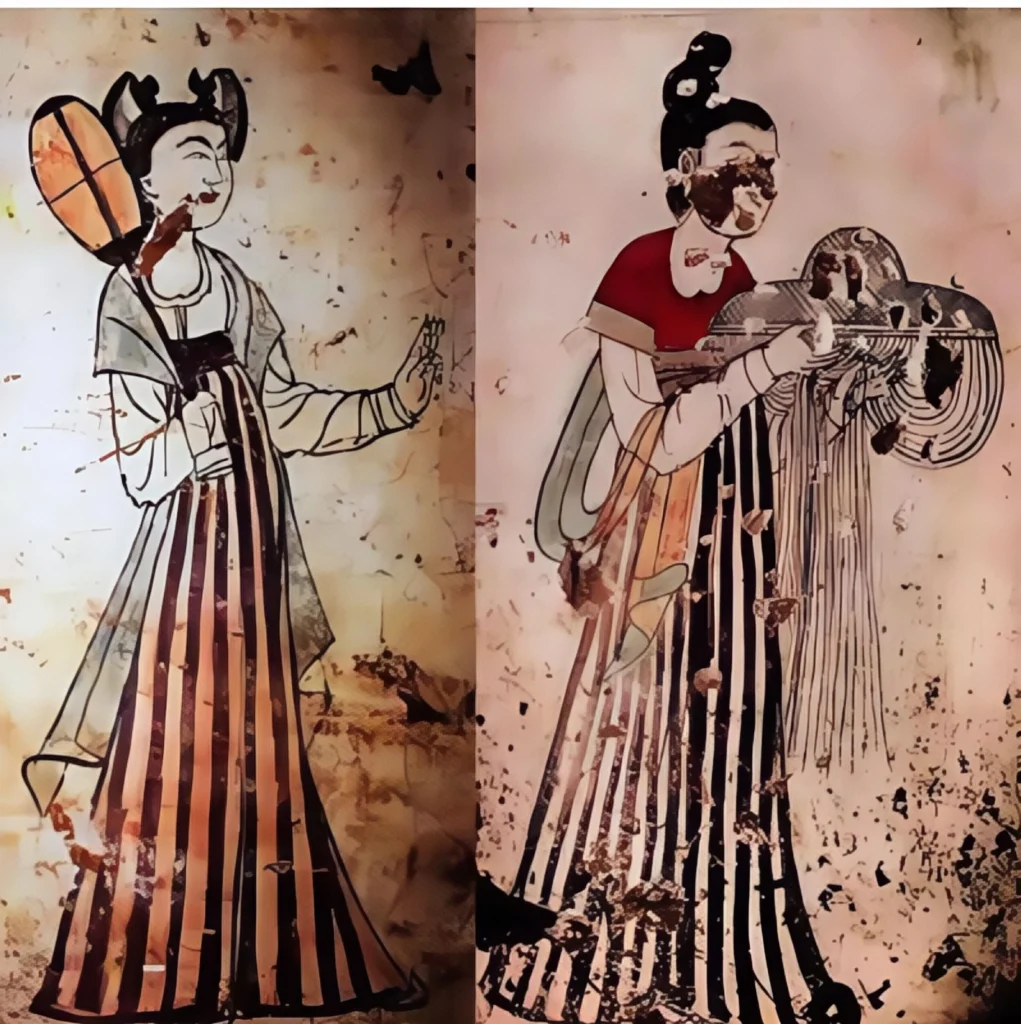

650–755 CE: High Tang Period
High Tang women’s clothing was looser than in the early period. Collars varied, including round, square, slanted, straight, and heart-shaped. Short jackets with long skirts had high waistbands, often tied above the waist or under the armpits, creating a chic, elongated look.
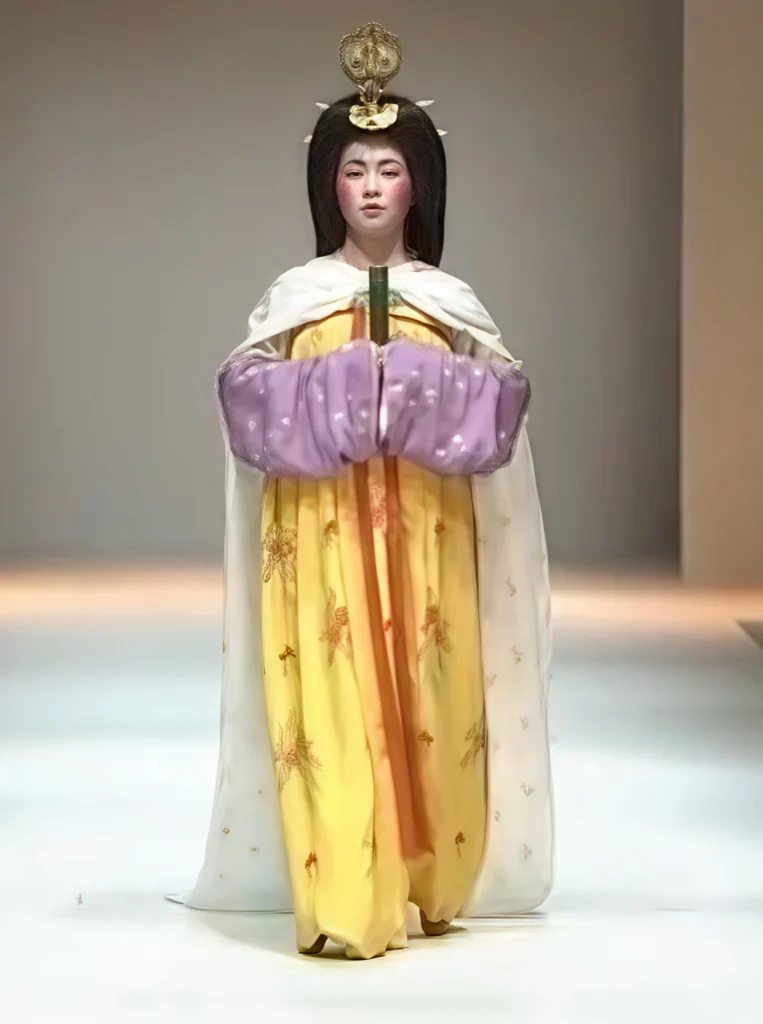

766–835 CE: Mid-Tang Period
After the An Lushan Rebellion, the mid-Tang’s weakened economy shifted women’s fashion from the bold, vibrant High Tang styles to a more refined, loose-fitting elegance.
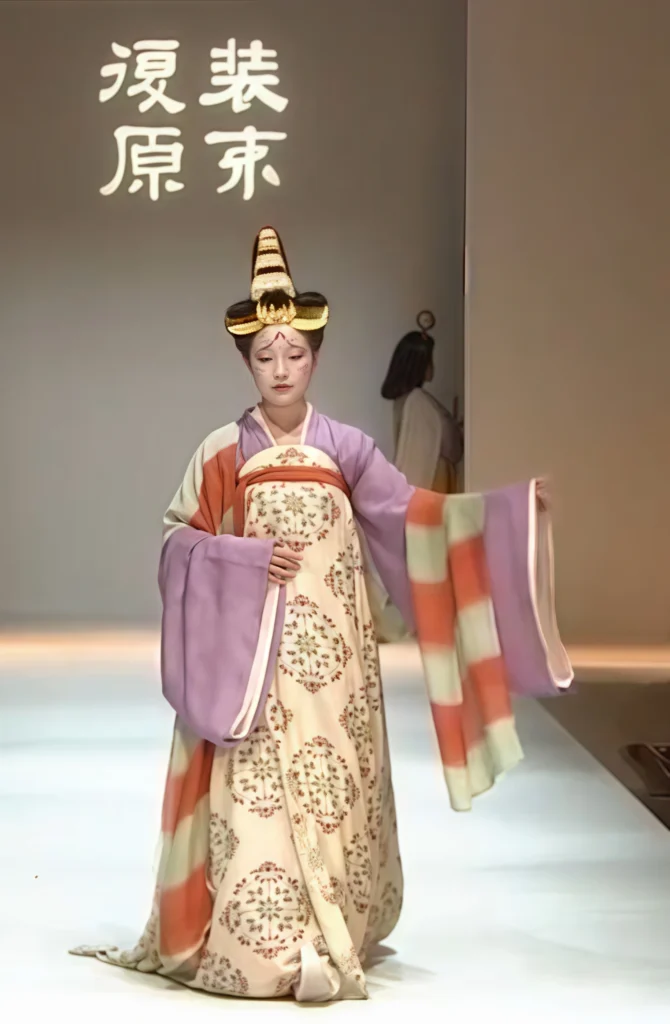
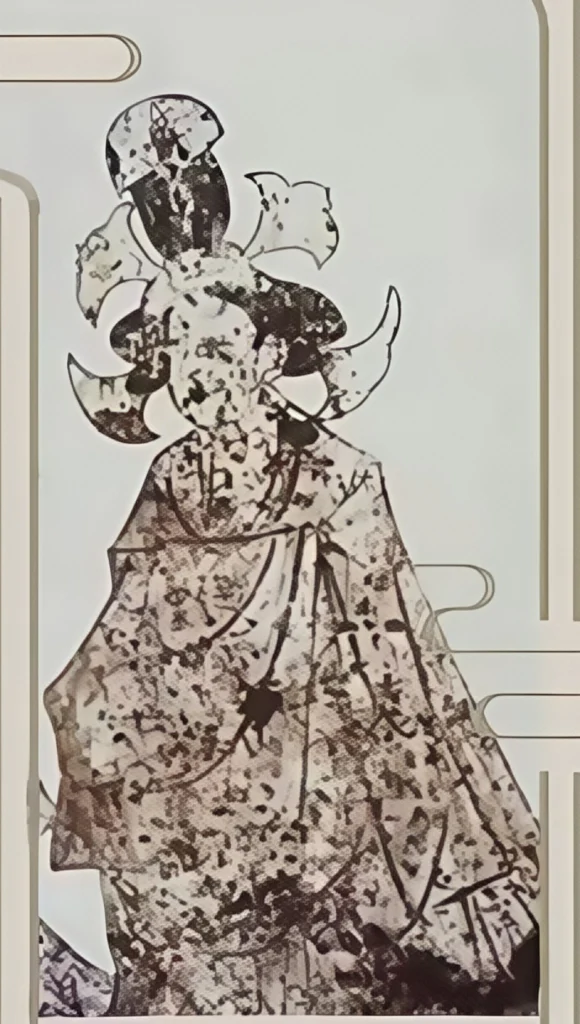
875–907 CE: Late Tang Period
After the High Tang, the influence of Hu clothing waned, and women’s styles grew wider. By the mid-to-late Tang, this was more pronounced, with women’s sleeves often exceeding four feet in width.
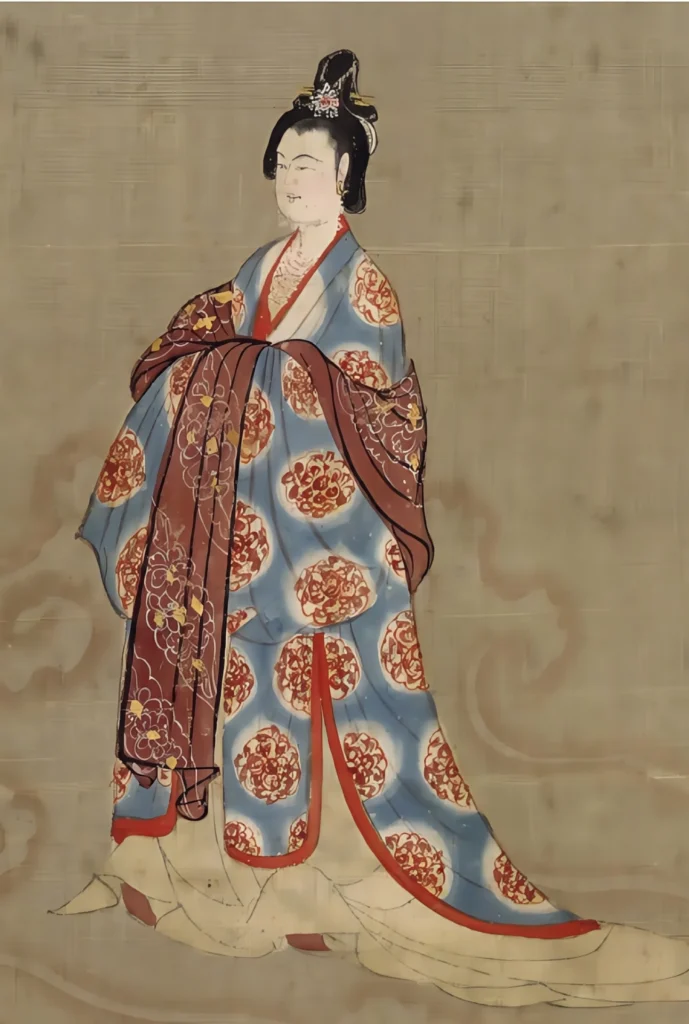

Mid-to-Late Tang Women’s Attire:
Wide-Sleeved Open-Front Shirt, Long Skirt, Shawl: A noblewomen’s ceremonial outfit for important occasions like court visits, rituals, or weddings. Paired with gold and jade hairpins, it was also called “fine hairpin ceremonial dress” (xi chai liyi).
Jacket, Skirt, and Half-Sleeve (Banbi): The Banbi evolved from the short jacket, typically open-front with a tied chest strap. Some were loose, slipped on from above with a wide neckline, exposing the chest. The Banbi hem could be visible or tucked into the skirt like a short jacket.The Banbi, a half-sleeve jacket, evolved with loose or tucked-in designs. Discover late Tang fashion at Shanghai Museum.
Explore More Tang Dynasty Hanfu
You can check out articles on Song Dynasty Hanfu restoration here, or explore a knowledge guide on Chinese traditional clothing and other types of classic Hanfu.

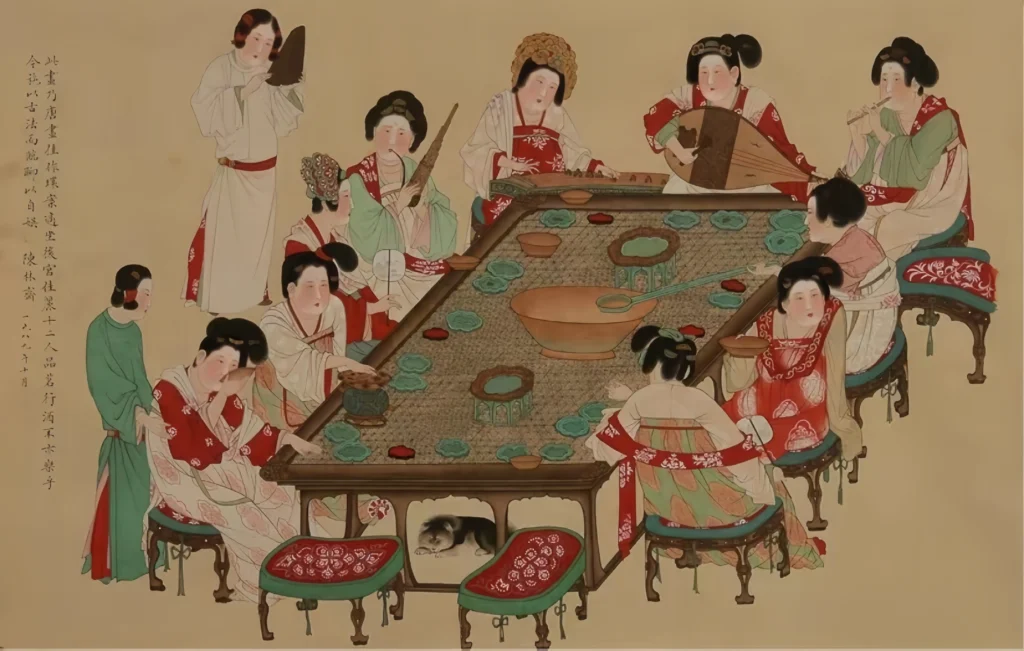
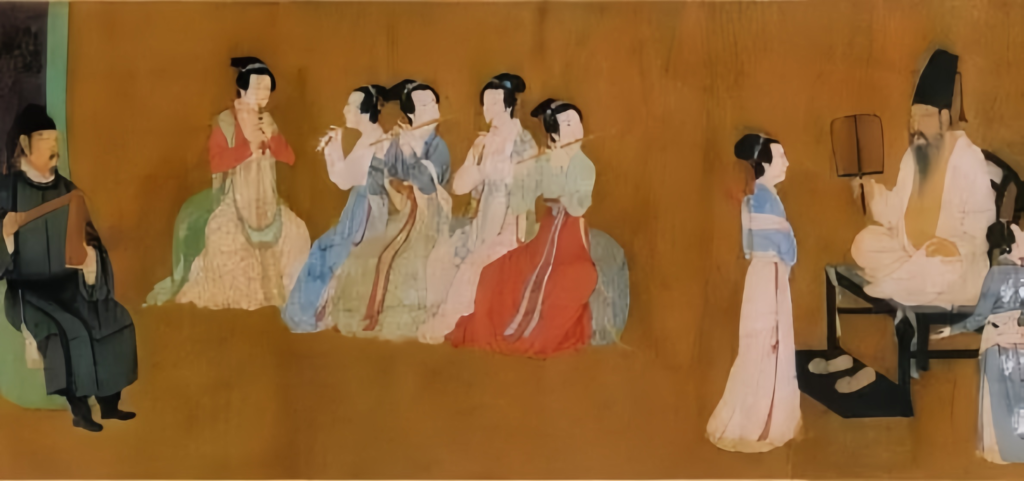
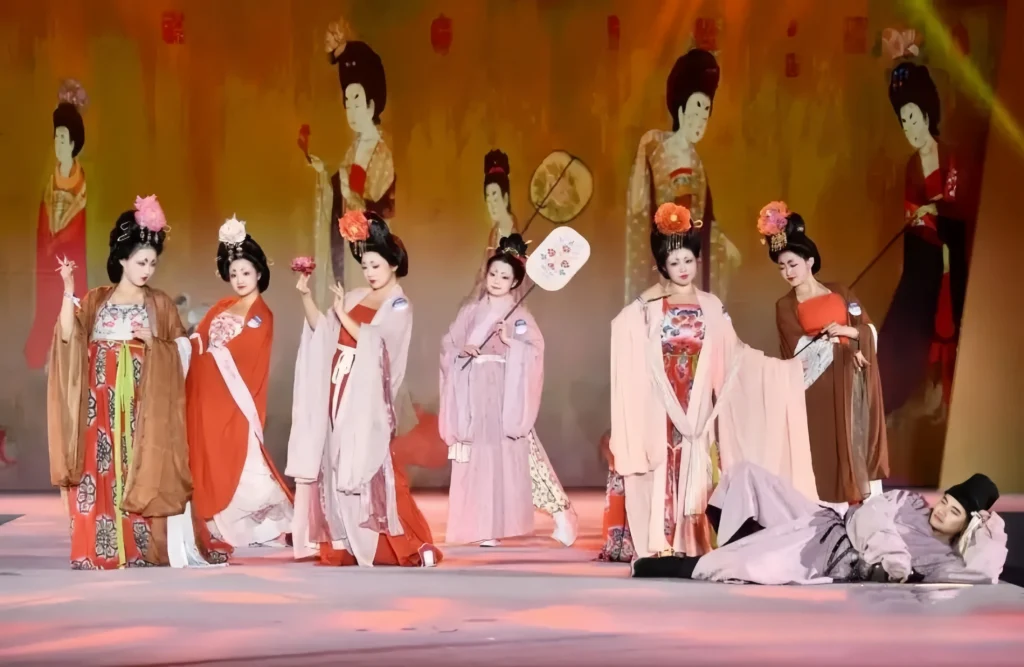
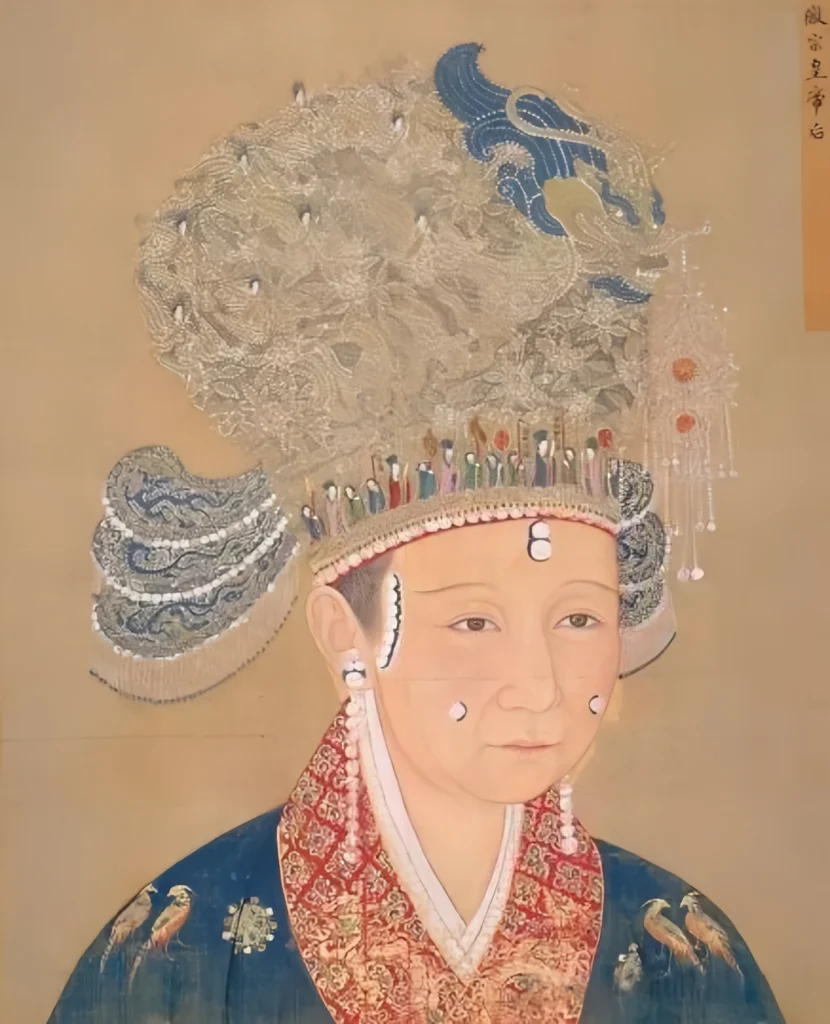
Responses